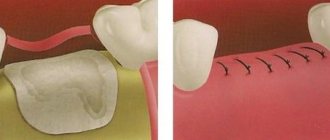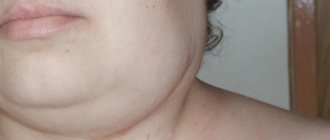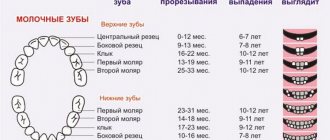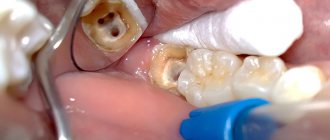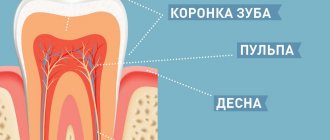If previously dental treatment at the dentist caused the patient severe psychological and physical discomfort, today medicine has stepped far forward. There are many methods of pain relief that help carry out any, even the most complex, treatment quickly and comfortably.
However, some patients still put off visiting the doctor until the last minute, doubting whether dental treatment is painful, although this tactic of behavior often causes complications. If caries at the initial stage can be eliminated without anesthesia at all, then by delaying going to the doctor the patient brings the matter to pulpitis, when the molar simply cannot be saved.
Today, questions about whether caries treatment and removal are painful are becoming increasingly irrational. What methods of pain relief are there and whether children’s fear of patients about dentists is justified will be discussed further.
Causes of toothache
First of all, how painful the dental treatment procedure will be depends on the cause of the problem:
- Caries - the process of tooth destruction begins with the appearance of slight darkening on the enamel, then the pulp tissue is involved in the process. It becomes painful for a person to bite on the side where the diseased molar is located. Then the tooth becomes sensitive to hot and cold food, and the chewing process causes a lot of discomfort. This disease is considered the most common in terms of the frequency of patients visiting dentists.
- Hyperesthesia – increased sensitivity of teeth. Why does it hurt to drink and eat in this case, because outwardly the molars seem absolutely healthy? The feeling of discomfort can be of varying intensity, depending on how sensitive the sensitivity has developed (it occurs when the enamel layer is worn away).
- Pulpitis is an inflammation process that is localized in the neurovascular bundle of the tooth. Basically, the disease becomes a complication of caries when the patient delays contacting the dentist for a long time and does not repair a small hole at the initial stage. The acute process is characterized by throbbing pain, which can be relieved with an anesthetic, but after a few hours the symptom returns again.
- Periodontitis is a complication of pulpitis. This disease affects the pulp, bone and connective tissue. If food gets into the hole formed in the molar, the person experiences acute pain, then in some cases the inflammation occurs against the background of fever, weakness, lack of appetite and sleep disturbances.
- Periodontitis is an inflammation of the tissues that hold the tooth in the gum (the mucous epithelium, ligaments and bone). After caries, this disease is considered the second most common. With periodontitis, pulsation occurs in the tissues of the mucous membrane; if you press on the gums, ichor is released from them. Molars become loose and sensitive.
- Growth of wisdom teeth - many have heard that the process of eruption of the eighth molars is accompanied by severe pain. In some cases, improper growth leads to serious complications (destruction of the roots of adjacent teeth, gum rupture, inflammation of the trigeminal nerve and suppuration).
The intensity of discomfort during dental treatment depends on what problem the patient went to the dentist with and at what stage of the disease he did it
Treatment with anesthesia for initial, shallow caries will be absolutely painless, but the removal of a wisdom tooth can provoke pain, or rather, it occurs not even during, but after the procedure.
Dentist drills teeth
For many, just the thought of having their teeth drilled makes them feel uneasy. The article will explain why pain and modern dentistry are incompatible. You will learn how to make sure that even a child goes to the appointment calmly and with a smile.
Why are teeth drilled?
In dentists' language, drilling teeth means preparing. The doctor removes tooth tissue damaged by caries before placing a filling. However, teeth are drilled not only for treatment.
The tooth may be prepared to be covered with a crown. Prosthetics are needed if the doctor sees that restoring a tooth with a filling is unreliable. For example, when it is a front tooth and there is a risk of chipping due to increased load. Another reason is the small volume of healthy tissue.
If the patient has deep caries, and even more so pulpitis, tooth restoration with a crown is indicated. In this case, the dentist drills the tooth in several stages. The doctor dissects it to remove caries-affected tissue to open the pulp chamber, gain access to the canals and widen them.
At the last stage, after removing the nerve and treatment, the dentist drills the tooth, grinding it down for a crown.
The doctor is sometimes forced to dissect even healthy (without caries) and living (with nerve) teeth. This happens when veneers are placed. They are ceramic overlays for teeth. It happens that the front teeth are too small or there are large distances between them. It happens that a spot appears on a tooth due to fluorosis, enamel hypoplasia, or trauma.
Sometimes a small part of the front tooth breaks off or the cutting edge wears off. There are simply very demanding patients when it comes to aesthetics. They want their front teeth to be the same shape, size and perfect appearance. In all these cases, installation of veneers is possible. Their advantage is that the tooth remains alive.
It is not depulped and a small layer of enamel is removed (ground down).
Drill teeth without pain
Some, especially the older generation, tell how they were treated without anesthesia not only for caries, but also for pulpitis. The doctor, by the way the patient twitched sharply, determined that the instrument had reached the nerve. Now everything is completely different. Anesthesia has become the standard in dentistry, with pain relief for both teeth drilling and extraction.
This is necessary, first of all, so that the patient in the dentist’s chair does not experience stress. Anesthesia also makes the doctor’s work more convenient. When the dentist just begins to dissect, it does not hurt the patient because there are no nerve endings in the enamel. But when the doctor approaches the enamel-dentin border, the person can jerk sharply in pain, and the dentist can damage the mucous membrane with the instrument.
Don't be afraid that the injection won't work. All modern anesthetics relieve pain equally well, and it does not matter how old a person is, what ailments he has or what medications he takes.
A medicine can only “fail” if the doctor injects it in the wrong place. This happens either because the dentist is inexperienced, or because the nerve bundle runs slightly in a different place than usual.
In such cases, they simply do it again in the right place.
Drilling teeth with an injection does not hurt. However, the patient feels the way the teeth are drilled, i.e., the vibration of the rotating instrument. The anesthetic blocks the type of nerve fibers that are responsible for pain. Completely different (proprioceptive) receptors are responsible for the sense of pressure and vibration. Fortunately, these sensations do not cause discomfort.
Anesthesia
Let's look at what else people are afraid of when they hear about pain relief.
- Pain from the injection. There are patients, especially children, who are frightened by the very injection of an anesthetic with a syringe. Doctors know about this, so they pre-lubricate the injection site with anesthetic gel. It reduces discomfort to a minimum. But it must be said that a good doctor makes the injection almost unnoticed.
- Allergy to anesthetic. The likelihood of its occurrence is negligible, much lower than the likelihood of food poisoning.
- Short duration of action of the anesthetic. Some are afraid that the “freezing” will disappear before the dentist finishes the work and pain will appear. Indeed, the duration of action of an anesthetic injection may vary slightly from person to person. The anesthetic will “work” faster in those who have better blood circulation in the area of pain relief. These same patients are more likely to “come away” from the injection. A doctor cannot predict this, but a good specialist is always interested in the patient’s feelings. If the analgesic effect decreases, the dentist transfers the next stages of work to another appointment.
- Side effects of anesthesia. Sometimes patients complain that immediately after the injection their arms and legs begin to tremble, their heart rate increases, etc. This reaction is caused by adrenaline in some anesthetics. In this case, the doctor selects another drug, without adrenaline or with a reduced content of it. There are plenty of such options, they are also used for children. Occasionally it happens that due to “freezing” a person’s eye cannot close. Don't be alarmed: this will go away as soon as the anesthetic wears off. It's all about the proximity of the anesthetized nerve to the optic nerve.
How long does it take to drill teeth?
It must be said that dental treatment is not always possible in one visit. And the reason for this is not the slowness of the dentist, but the careless attitude or fear of the patient, because of which he postpones the visit to the doctor.
Caries, when there is no need to depulpate the tooth (remove the nerve), is treated in one visit. Pulpitis is treated in two visits.
After removing the nerve and cleaning the canals, the dentist places a temporary filling, and a medical pad under it. The patient is released for about a week. The next time the doctor asks if the tooth hurt.
If not, then the channels are cleaned well. They can be filled and the tooth can be restored with a permanent filling.
It happens that the patient has brought the tooth to periodontitis, that is, when the inflammation has already spread to the tissues around it. Then the dentist injects medicine into the canals. After a few days, repeat the procedure, and so on several times, until the inflammation disappears. Further treatment is the same as the treatment of pulpitis.
Restoring a tooth with a filling, even without pulp removal, can be lengthy. How long it takes to drill a tooth depends on the size of the carious cavity. It often happens that a tooth is affected from several sides, for example, on the chewing surface and in the interdental space.
In this case, the dentist creates several cavities for fillings. A lot of time is spent making the tooth indistinguishable from natural, healthy teeth. This is why doctors prefer to call the treatment aesthetic restoration.
Of course, you can drill out a tooth and close it with a filling in 5 minutes, but high-quality work, when attention to detail is paid, takes 30 or 60 minutes.
Tools
What does a dental therapist use to drill teeth? The working tool is a turbine tip. Thanks to the motor, it rotates at a speed of 200-500 thousand revolutions per minute. More powerful tips have a larger head.
A bur (diamond, steel or alloy) is installed in it. Burs come in different abrasiveness, shape, and size. This is determined by purpose. The turbine tip has a cooling system, and modern samples have a backlight.
How is a tooth treated?
Let's consider the stages of caries treatment, i.e. the situation when the tooth remains alive (with a nerve) and the canals are not filled.
When the anesthetic has taken effect, a rubber dam is placed on the tooth. This is a thin elastic film that protects the tooth from saliva or gum fluid.
The dentist drills out all tissues damaged by caries and creates a cavity for the filling. He then applies the etchant to the tooth for 10 to 40 seconds. This is a substance (acid) that removes sawdust after drilling and makes the tooth surface rough for better adhesion.
After washing off the etching, the doctor applies fluoride varnish, which strengthens the dentin and reduces tooth sensitivity. The next step is to apply bonding. This is a substance for the ligament of the tooth with the filling, which penetrates the dentinal tubules. To make the bonding harden, it is illuminated with a helium lamp. Its rays are harmless, it is just a blue LED lamp.
To place a filling, the dentist needs several types of filling material because different parts of the tooth have different colors and translucency. The doctor applies an opaque dentin-colored material and illuminates it. A transparent layer (enamel) is applied to the incisal edge and exposed.
Next, the doctor, to make the tooth look natural, forms the longitudinal ribbing of the tooth (mamelons). If the tooth is chewing, it creates grooves (fissures) between the cusps. Lights it up, removes the rubber dam and polishes it.
Grinding is necessary not only for the beauty and shine of the tooth, but also so that plaque sticks to it less.
Next, the dentist checks the height of the filling. He places special paper, similar to copy paper, on the tooth. The patient makes several chewing movements, and imprints remain on the teeth at the points of contact. Using them, the doctor determines whether the filling is too high or too low. Makes changes if necessary. If this is not done, the filling will interfere with chewing and the bite will be disrupted.
Features of children's treatment
If the parent himself is afraid of the dentist and scares the child with him, then visiting the doctor will be problematic. Show that you treat visiting the doctor as something routine. Tell them that all your relatives and friends go to the dentist. If possible, take your child with you to your appointment. Play treatment at home, don’t tell them how teeth are drilled, but count them, look at them in the mirror.
On the day of your visit to the doctor, do not be too affectionate and do not shower him with gifts. This will alert the child. Don't threaten punishment. Don't come too early, don't sit in the hallway, because the baby may get upset because of the crying children.
A good pediatric dentist will never drill a child’s tooth out of the blue. He will talk to the baby using the definitions available to him.
For example, do not drill, but buzz, do not give an injection, but smear with cold ice cream, do not treat, but take out the worm from a tooth, do not put a filling, but cover it with chewing gum.
Expensive private clinics even offer an adaptation service, where the doctor plays with the child, teaches how to brush teeth, etc.
Local anesthesia is required; the baby should not feel pain. But please note that the clinic must have a license for children's treatment. Different dentists approach general anesthesia differently.
It can be avoided in 99% of cases.
Sedation is justified if a child with a strong gag reflex is undergoing treatment of lateral teeth, if the child is uncontrollable, if the previous treatment caused him severe psychological trauma.
Is it harmful to drill your teeth often?
Drilling teeth damaged by caries is not harmful, but necessary. Even a person who is careful about their oral hygiene may need treatment, and here's why.
In the cervical areas, in the fissures of the lateral teeth, plaque accumulates faster due to limited access. In addition, the layer of enamel in these areas is thinner than, for example, on the masticatory hillocks.
The emerging caries may not be noticeable to the patient, but it develops quite quickly.
It happens that a person sees a tiny dark spot on a tooth, and the doctor has to drill out a huge cavity and cover it with a large filling. How does this happen? The fact is that enamel is the hardest tissue in the body. Caries affects it more slowly than the dentin located along it. A small entrance hole in the enamel leads into a large cavity in the dentin.
If a person goes to the dentist because a tooth begins to hurt, it means that inflammation has begun, i.e. pulpitis. In this case, you will need to drill more. We can conclude that teeth are drilled more often in those who do not see a doctor on time or ignore preventive examinations.
Drilling teeth in a dream
If you dreamed that your teeth were being drilled, that's wonderful. Firstly, this is an occasion to remember how long ago you visited the dentist. Secondly, according to dream books, this is a sign that your affairs will go smoothly and your problems will be resolved.
If you were the patient in the dream, your financial situation will improve, and your relationships with others will come into balance. If you drilled someone else’s teeth, it means you have a reliable friend who is ready to lend a helping hand in difficult times.
Expert advice
Before starting treatment, a good doctor always explains what he will do and why. Don't hesitate to ask your dentist anything you don't understand. A professional doctor is interested in caring patients. In addition, you must clearly articulate what results you expect from the treatment.
Describe your fears to the dentist. People are often afraid of the unknown, so the doctor should dispel doubts with his explanations, and also do everything to make you feel comfortable. If you trusted a specialist and agreed to treatment, then follow the doctor’s requests during the process.
Sometimes after filling there is a reaction to hot and cold. This is due to the fact that the filling material has a higher thermal conductivity than the tooth. In this case, the doctor uses a sealant.
Another option is to wait; the sensitivity will decrease on its own over time. In six months everything will be as before. If after filling the tooth begins to react to acid, go to the dentist.
This reaction indicates a leak in the filling.
Prevention of caries
A child who is teething needs to be seen by a pediatric dentist once. The doctor will check that everything is going as it should. Until the age of three, it is enough to come for an examination once a year. After three years, a child, like an adult, should visit the dentist twice a year.
Brush your teeth twice a day with a soft or ultra-soft toothbrush and low-abrasive toothpaste.
Thanks to such a brush, you will never have a wedge-shaped defect, when the enamel in the cervical part of the tooth is erased due to excessive pressure. Brushes with bells and whistles don't make sense. The most important thing is the size of the head.
The smaller the number, the more convenient and better the cleaning. For patient perfectionists, there are mono-tuft brushes. They clean best, but take a long time.
Children's teeth should be brushed from the moment they appear. When the child is too small, an adult does this with a fingertip. Children 3-4 years old can be taught high-quality cleaning using plaque detection indicators. These are chewable tablets or lozenges that color the plaque blue or red.
Thin dental floss will help remove plaque between the teeth and under the gums. Some complain that it injures the interdental papillae. In this case, you can use interdental brushes. The irrigator allows you to brush your teeth even better. It is especially needed for people with braces. All this, coupled with regular (twice a year) professional cleaning at the dentist, gives excellent results.
Don’t think that drilling a tooth is painful, because it is done under local anesthesia. If the doctor refuses to give an anesthetic injection, do not agree and go to another specialist. A good doctor will never put a patient under stress.
Source: https://glivec.su/2018/08/24/stomatolog-zuby-sverlit/
Types of anesthetics
Each person has different sensitivity to painkillers and a different pain threshold, so the medicine is selected not only taking into account these factors, but the choice even depends on the location of the tooth. Upper molars, for example, react to the treatment process more painfully than lower molars. All drugs have different durations of action, and the choice is made depending on the intended procedures.
The most commonly used medications for pain relief are:
Toothache after caries treatment
- Novocaine - used in cases of treatment of superficial and medium caries, when the procedure does not last longer than 15 minutes;
- Pyromecaine - the effect of the drug begins 2 minutes after administration and lasts up to half an hour;
- Lidocaine is an anesthetic that can relieve pain for 1.5 hours in a row;
- Articaine - the effect of the product begins after literally 1.5–2 minutes;
- Bulivacaine is a drug with a long duration of action, lasting up to 12 hours.
Ultracaine is considered the most modern drug for pain relief; it contains the substances Articaine and Epinephrine. Doctors have long found out that the effect of anesthetics will be different for each patient. For example, people with red hair are much more resistant to the effects of drugs, which forces doctors to give them a higher dose for a lasting effect.
Even stress can affect the effectiveness of the product; if a person is very excited or depressed, it can be very painful for him. Therefore, dentists always recommend calming down and trusting a professional.
Many patients are afraid not only of pain during dental treatment, but also of the anesthetic injection itself. It must be said that syringes are now equipped with thin and short needles, thanks to which the medicine is administered completely painlessly. To reduce the level of fear, the dentist may first apply an application of an anesthetic substance to the gum.
Nowadays, dental treatment has become completely painless thanks to modern methods that involve the use of strong, safe and non-toxic anesthetics. They are divided into 4 groups:
- Application - refers to local anesthetics, the mucous membrane is impregnated with drugs whose duration of action is up to 20 minutes. Using the application method of anesthesia, tartar is removed, suppuration is opened, baby teeth are removed and crowns are fixed.
- Infiltration – the most effective and popular in dentistry. With the help of drugs of this group, nerve impulses are blocked, and the effect occurs within 3 minutes after administration, the duration is at least an hour.
- Conductive - they are found in the area where the trigeminal nerve passes, and have a duration of action of 1 to 2 hours. They are used when tooth extraction, gum treatment or extensive surgery is planned.
- Stem - rarely used, only in stationary conditions. Mainly during operations on the trigeminal nerve, with intense pain and operations on the jaw area.
For people who experience an allergic reaction after receiving an injection, alternative methods of pain relief are indicated - laser preparation and chemical treatment. Therefore, even if you have allergies, you can choose a method to make dental procedures painless.
How teeth are drilled - For patients about dentistry
Caries – in Latin “rotting”. In order to cure it, you must first remove what has rotted. There are several ways to do this.
Drill
Dentists twisted the first burs by hand (you can read about this in the article “History of Dental Treatment”). Then - with your feet. Then they entrusted this matter to electricity.
Nowadays, burs are rotated by compressed air, and it is pumped by an electric compressor.
No matter what modern drill is - with great speed and low vibration, with cooling - the tooth still heats up from the drill. This is why drilling is painful, and it is most often done with an anesthetic injection.
Sometimes patients say: there was a small hole, but when they drilled it out, it became huge. But this is not because the doctor is crooked.
The thing is that tooth enamel is the hardest tissue of the body and is destroyed more slowly than the dentin that lies underneath it.
The hole can actually be huge, but only a small dot is visible on the enamel, or nothing at all is visible if the caries is interdental .
In addition, there are rules for boron preparation. The doctor cannot remove less than required - the filling will fall out, or secondary caries .
Fear of the dentist is most often fear of the drill. There are people who are so afraid of it that they try to cure tooth decay themselves. They bite the rest of their teeth into the Internet and look for magical folk recipes there.
I have two news for them - bad and good. The bad: no matter what all sorts of “experts” say, caries cannot be cured without a dentist. Good: without a drill ! Read about it below.
Sandblasting machine
There are several devices that allow you to remove caries with sand: Aquacut Quattro and AquaCare (UK), Sandman (Denmark), RONDOflex plus 360 (Germany).
Device for cleaning and preparing teeth Aquacut Quattro
They are also called kinetic or hydrokinetic. Of course, they do not use river or sea sand, but a special abrasive. In some machines it is poured from a large can, in others the abrasive is packaged in cartridges. These same devices, only with a different type of abrasive, can be used for professional teeth cleaning.
In order to more clearly explain the advantages of such devices, we need to go a little away from the topic.
Dentists, if possible, try to save the tooth pulp (nerve). When it is alive, the tooth receives with its help substances that maintain it in normal condition. If the pulp is removed, it darkens, becomes brittle and can collapse even from a small load. In addition, neither a granuloma nor a cyst will ever grow on the root of a living tooth, due to which you can lose the tooth.
Pulp is removed in several cases:
1. If this is necessary for prosthetics.
2. If the tooth has chipped down to the pulp due to injury. Most often this occurs due to impacts or stones in the food, but sometimes for more exotic reasons. For example, I know a person whose tooth was “shot off” with a traumatic pistol. As Vasily Alibabaevich said in the film “Gentlemen of Fortune”: “Why are you so angry? Why, like a dog?”
3. The tooth did not break off, but due to a strong blow, the pulp became inflamed or died (pulpitis or periodontitis).
4. Caries (now called complicated) reached the pulp, it became inflamed and the tooth became sick (pulpitis). Or the inflammation has spread beyond the tooth – periodontitis.
5. Caries has almost reached her. In this case, due to heating of the tooth during treatment, there may be pulpitis. There is no fault of the doctor here - he just should have contacted earlier.
Inflammation of the dental pulp - pulpitis
Periodontitis
When deep caries is removed with sand, the probability of pulpitis is, of course, not zero, but it is much lower than when working with a drill, because the tooth does not heat up during preparation. And if they work with initial or intermediate caries, then it also doesn’t hurt. Pain relief is almost never needed with this method of work.
I heard from doctors who were “told by other doctors” that this is all nonsense and only superficial caries can be treated with sand. I know for sure that neither one nor the other even tried to work using this method.
Because for ten years, three meters from my workplace, the Aquacut Quattro device was used to clean teeth and treat all types of caries.
Personally, I was treated for deep caries (it happens - dentists are people too) without pain relief.
There are no special contraindications to this treatment. Unless you need to treat small children and asthmatics with caution - collect flying sand with a saliva ejector and a vacuum cleaner.
And if everything is so great, why don’t all clinics have such devices? So I’m surprised. I suspect that it has to do with two things – the conservatism of doctors and the cost of consumables.
Laser
A person consists of 60-70% water. There is water in the teeth too. Laser tooth preparation is based on the fact that the laser beam causes water to boil in the tooth tissue. A series of micro-explosions occur in the enamel and dentin, and they begin to flake off.
Various types of lasers in dentistry are used to perform operations, treat caries and its complications, and clean and whiten teeth.
How effective? Honestly, I don’t know, I haven’t seen laser work. And I won’t say more about this, lest it turn out like the joke:
– And what did everyone find in these “Beatles”? I heard them. They burr, they fake it, their English is so-so. -Where did you hear them?
- Yes, my neighbor sang to me!
No, I’ll still say a few words: there are contraindications, consultation with a specialist is necessary.
Art technology
Do you think this technology is used to treat the teeth of artists or artists? No, ART – Atraumatic Restorative Therapy. In English it sounds even more respectable, but we are not studying languages here, so we won’t talk about it.
The meaning of this therapy is this. Substances are applied to caries, usually in the form of gels, which soften the “rotten” areas of the tooth. They are then removed with tools that are specially designed for this method.
This technology is used in the treatment of children and adults who are afraid to have their teeth drilled, or for some reason cannot be relieved of pain. I think scraping your teeth with pieces of iron is also a dubious pleasure. But if there are no other options, it is better to treat this way than not at all.
In addition, it is recommended to treat residents of remote villages with this method. And this is true: if a doctor travels by car, he can take mobile equipment with him. What if it’s on a donkey or a deer? A good solution is to throw a couple of boxes into your backpack and heal the entire village.
Well, we drilled, blew, scraped - we got a hole that needs to be covered with something. And how they do this, you will find out on the next page.
© Vadim Alyamovsky, 2020
Source: https://pro32.info/lechenie-zubov/chem-sverlyat-zuby.html
Wisdom tooth removal
Removing the figure eight, which, moreover, is not growing correctly, is considered a minor surgical intervention. During the operation, the doctor uses a drill, forceps, elevators and other instruments. The intervention can last up to 2-3 hours at a time, so the dentist uses long-acting anesthetics, for example, Bulivacaine.
In this case, a person can only experience psychological discomfort, but there is no physical pain.
In particularly difficult cases, when it is necessary to clean the gums from bone fragments or destroyed roots of adjacent molars, general anesthesia can be used. After 2–3 days, the pain disappears, and its severity can reach high limits. Dentists prescribe painkillers such as Ketorol or Baralgin.
Treatment of periodontitis on the front teeth
To stop the pathological process, the dentist prepares the damaged tooth, restores the patency of the root canals, and carries out mechanical and medicinal treatment.
Treatment of periodontitis is a complex process that is carried out in several stages.
Pain in a patient with periodontitis is caused, as is correct, by severe inflammation of periodontal tissues and accumulation of purulent exudate, so the use of anesthetics is not always effective.
After opening the tooth cavity and root canals, the intensity of pain noticeably decreases, which is explained by the free outflow of pathological contents. During subsequent visits to the dentist, the patient does not feel any discomfort.
Today, the development of the pharmaceutical and dental branches of medicine makes it possible to treat teeth completely painlessly. At the same time, the effectiveness of anesthesia is much higher if the patient does not “trigger” the disease and seeks medical help in a timely manner.
Even when a person has a history of allergies to the effects of painkillers, treatment of the upper front teeth can be carried out without any discomfort. In this case, the dentist uses alternative methods of anesthesia - psychotherapy (hypnosis), electrical or audio analgesia, or offers more expensive but safe treatment using laser beams.
Which teeth are more painful to treat?
Many patients wonder what is more painful – to treat the front teeth or the chewing ones, the upper or lower ones. Using modern anesthetic drugs, the doctor can carry out any procedure without the patient experiencing discomfort. However, differences depending on the location of the molar do exist. Caries on the upper front teeth develops much faster because they are more prominent than the lower or chewing ones.
With poor oral care, even slight darkening of the enamel of the upper molars quickly leads to medium and deep caries, so do not delay a visit to the doctor. To stop the process, the doctor will use strong anesthetics, since the molars on the upper jaw are highly sensitive. Before this, the tooth is surrounded with latex fabric to prevent the entry of moist bacterial environments from the oral cavity.
Features of milk teeth removal
Many parents are convinced that children do not need to remove and treat baby teeth affected by caries, because they will fall out on their own anyway. However, this opinion is erroneous - baby teeth also have nerve endings, and children do not know how to endure pain; even at the initial stage of caries, the baby may complain of severe discomfort.
The long-term destructive process of the primary incisor can affect the condition of the rudiment of a healthy molar that grows next
Milk teeth, unlike molars, are much easier for a child to remove because they have fewer nerve endings and the roots are thinner, so the removal procedure does not always require anesthesia. If the child is negative and afraid of pain and discomfort, the dentist can treat the gums with a freezing aerosol or apply an application.
As it became clear, horror stories about the terrible pain that patients experience in the dentist's chair are far-fetched. If previously a person experienced stress from the mere sight and sound of a drill, now all medical equipment looks neat, operates quickly and efficiently, and a comfortable environment reigns in the dentists’ offices.
In addition, doctors use the safest, non-toxic painkillers, which allow the treatment or removal procedure to be carried out absolutely without physical and mental suffering for the patient.
